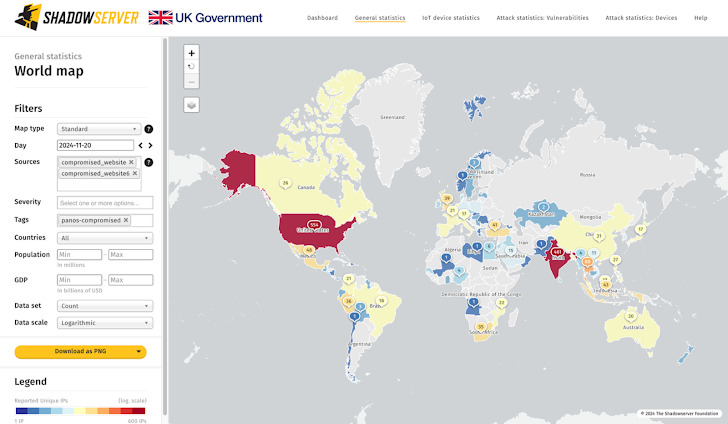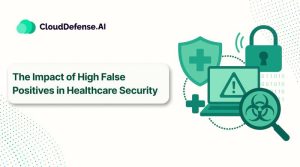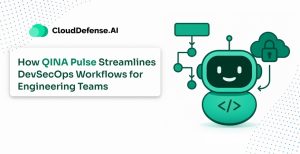Over 2000 Palo Alto firewalls—key defenses in corporate and government networks—have been compromised. Hackers exploited newly uncovered vulnerabilities, targeting some of the most trusted systems in cybersecurity.
If you’re responsible for network security, this isn’t just a story to follow; it’s a threat to analyze immediately. In fact, the scale of this attack is alarming. The hackers didn’t just bypass safeguards; they turned critical infrastructure against its owners. We’re looking at a shocking reminder of how fast cyber threats are evolving. The question isn’t just, “Could this happen to us?” It’s, “How do we stop it from happening right now?”
Here, let’s break down what went wrong, who’s at risk, and what must change.
Background of the Palo Alto Firewall Breach
Discovery of the Attack
In early November 2024, Palo Alto Networks identified a potential zero-day vulnerability in its PAN-OS software. By November 15, the company confirmed that attackers were actively exploiting it in the wild. Three days later, on November 18, patches were released to address the vulnerabilities. But the damage had already started.
Scale of the Attack

The Shadowserver Foundation reported that over 2,000 devices had already been compromised. At the peak of the vulnerability’s exposure, there were around 11,000 internet-exposed Palo Alto firewalls. But by November 20, that number had dropped dramatically to just 2,700, as organizations quickly acted to close off their systems from the outside world. Still, the damage was done. Thousands of firewalls remained vulnerable for days, leaving them wide open to exploitation.
What Happened: The Exploited Vulnerabilities
CVE-2024-0012 (Authentication Bypass):
- Impact: This critical vulnerability allows remote, unauthenticated attackers to gain administrator privileges by exploiting the firewall’s management interface.
- Severity: Rated as critical, it is highly dangerous due to its ease of exploitation and the privileges it grants.
CVE-2024-9474 (Privilege Escalation):
- Impact: This medium-severity flaw enables attackers to execute commands with root privileges, providing complete control over the firewall.
- Exploit Chain: When combined with CVE-2024-0012, this flaw forms a devastating attack chain capable of compromising even highly secured networks.
Hackers used these two vulnerabilities together, chaining them to gain full control of targeted firewalls. Once inside, attackers deployed malware and executed arbitrary commands, effectively turning these firewalls into tools for further attacks.
Products and Systems at Risk
The vulnerabilities affected a wide range of Palo Alto products running PAN-OS versions 11.2, 11.1, 11.0, 10.2, and 10.1. Impacted devices included:
- PA-Series Firewalls: Widely used in enterprise environments.
- VM-Series Firewalls: Popular in virtualized and cloud infrastructures.
- CN-Series Firewalls: Designed for containerized environments.
- Panorama Systems: Centralized management platforms, including both virtual and M-Series appliances.
Attackers’ Methods and Indicators of Compromise
Initial reports indicated that the attackers were using IP addresses linked to anonymous VPN services, making it difficult to trace the origin of the attacks. Threat actors took advantage of these vulnerabilities to drop malware and implemented remote code execution (RCE) to execute remote commands on the compromised firewalls. The exploitation of these flaws was not just a one-off; attackers were likely using a publicly available exploit chain to target vulnerable devices, making the problem even worse.
CISA’s Immediate Response
The Cybersecurity and Infrastructure Security Agency (CISA) quickly responded by adding both CVE-2024-0012 and CVE-2024-9474 to its Known Exploited Vulnerabilities (KEV) catalog. This meant that federal agencies were required to patch their vulnerable systems by December 9, 2024. CISA also warned that attackers had been exploiting a different vulnerability, CVE-2024-5910, which had been patched in July but remained a risk for devices exposed to the internet.
A Warning for All Organizations
While Palo Alto Networks categorized the exploited devices as a “limited number” of their deployments, the breach exposed how critical infrastructure can quickly become a target. The security firm strongly advised its customers to:
- Restrict management interface access to trusted internal IPs.
- Immediately apply patches to all affected devices.
- Continuously monitor systems for signs of compromise.
Even with these efforts, the scale and impact of this breach are significant. And, the implications are clear: no system is immune, and no organization can afford to be complacent.
Key Impact and Risks of the Attack
Widespread Exposure
The attack has exposed a serious flaw in Palo Alto’s firewall systems. Though the number of internet-exposed devices has dropped significantly from 11,000 to around 2,700 in a week, the damage is already done. Over 2,000 devices have been compromised, with many others still vulnerable. If you’re using a vulnerable version of PAN-OS, you’re at risk—this isn’t just a theoretical problem, it’s happening now.
Privilege Escalation and Full Control
The two vulnerabilities in question allowed attackers to escalate privileges and gain full control of the firewalls. Once attackers got into the firewall management interface, they could easily elevate their access, eventually gaining root access. This kind of control means they can modify system configurations, disable protections, or execute any commands they want, putting your entire network at risk.
Targeting Critical Infrastructure
This wasn’t just about hacking firewalls for fun—attackers targeted critical infrastructure. Once inside, they could alter firewall settings and potentially compromise entire networks. The fact that this attack has gone after such crucial systems highlights just how high the stakes are for organizations that rely on these devices for their security.
Operational Impact and Malware Deployment
After taking control, attackers deployed malware and ran commands remotely. This could cause system failures, allow data to be stolen, or even create backdoors for future exploits. The malicious activity isn’t over yet—these attacks could evolve further, impacting more organizations as time goes on.
Government Agencies at Risk
The fact that CISA stepped in shows how serious this is. The vulnerabilities have been added to the Known Exploited Vulnerabilities (KEV) Catalog, and now federal agencies have been given a deadline to patch their systems by December 9. This isn’t just a corporate issue—government networks could also be compromised, which is a huge concern for national security.
The Ongoing Threat
Even though patches are now available, the exploitation of these flaws will likely continue for some time. Many organizations may not be able to patch immediately, leaving them open to attacks. This is a long-term issue that requires ongoing attention.
How to Protect Against Future Breaches
Patch Your Systems Immediately
The best way to protect against this attack is to patch your systems. Palo Alto Networks has already released the necessary fixes, and applying these updates is the first and most important step you can take. If you haven’t patched yet, do it now.
Restrict Access to Management Interfaces
Another critical step is restricting access to your firewall management interfaces. Only allow access from trusted internal IP addresses. This simple action can prevent attackers from accessing your systems, even if they’re trying to exploit vulnerabilities.
Continuous Monitoring
You can’t afford to wait around for problems to arise. Monitor your networks in real-time to detect any unusual activity. Early detection can help you minimize damage and stop attacks before they escalate.
Review Your Security Practices
This breach is a reminder that security needs to be constantly updated. Take this opportunity to review your firewall configurations, network security protocols, and overall cybersecurity strategy. It’s not just about applying patches—it’s about making sure your systems are set up to protect you against future threats.
How CloudDefense.AI Can Help Prevent Such Attacks?
The recent attack exploiting vulnerabilities in Palo Alto Networks firewalls highlights the importance of having strong, proactive security measures in place. CloudDefense.AI offers several capabilities that can help prevent attacks like this from happening, or at least minimize their impact if they do occur.
CloudDefense.AI focuses on securing cloud infrastructure by implementing strict Cloud Infrastructure Entitlement Management (CIEM) controls, preventing unauthorized access to sensitive systems and data.
This ensures that even if attackers gain initial access through vulnerabilities like those in Palo Alto firewalls, their ability to move laterally or escalate access is effectively blocked. Such a layered approach promises that, even in the event of a breach, attackers face a tightly secured environment with no easy path to escalate or exploit further, significantly limiting their impact.
With CloudDefense.AI, you don’t just react to breaches—you proactively ensure they lead nowhere, keeping your critical assets safe and operations intact.
Take Action Before It’s Too Late
The recent attack on Palo Alto firewalls shows how fast attackers exploit vulnerabilities, leaving little time to react. Protecting your cloud environment isn’t optional—it’s essential. You need tools that give you real-time insights, proactive detection, and the ability to act fast before attackers can make their move.
Take the first step toward securing your infrastructure. See how CloudDefense.AI can help you stay ahead of emerging threats and keep your environment safe.
Book a Free Demo Today and let’s make sure your cloud is ready for whatever comes next.







